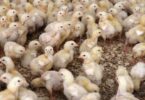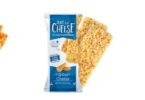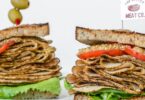This is the final installment in a four-part series about how food and beverage companies have performed during the pandemic. All of the articles can be found here.
In Conagra Brands’ most recent earnings call, President and CEO Sean Connolly drew some parallels between consumers now and during the Great Recession of 2007-09.
More than a decade ago, many consumers found their finances tightening and had less money to spend on leisure. CPG food sales went up because people ate out less, Connolly said. But even after that 18-month economic downturn ended, sales continued at the same rate — likely because consumers had formed new habits, he said.
While the economics haven’t been quite the same during the COVID-19 pandemic, Connolly said consumer behavior just might be.
« Psychology experts assert that it takes, on average, 66 days for a new behavior to become habitual, » Connolly said during the early April earnings call. « As you all know, we are nearly 400 days into the COVID-19 pandemic. Consumers have adapted to at-home eating and formed new habits that we expect to sustain well beyond the current conditions. And early data supports our hypothesis. »
Connolly said retail data from the states that had earlier and larger reopenings of restaurant dining rooms and other places with on-premise dining showed sales growth of Conagra’s products stayed consistent.
« So while people are starting to leave their homes more frequently, they are still choosing to eat at home, » he said.
As the U.S. moves out of the pandemic’s shadow, this is what large CPG companies are hoping for: the consumer habits and preferences established last March to continue. They would like consumers to remember the comfort, nutrition, taste and convenience of Big Food brands. Many hope the allure of dining out will not make them forget the food they have enjoyed making and consuming at home.
Of course, while sales were booming during the pandemic — for most companies — food manufacturers weren’t just sitting back and watching the money roll in. They have been actively transforming their entire business structure, from sourcing to supply chain to consumer data to R&D, to serve consumers in post-COVID times. As pandemic-related restrictions decrease, maintaining momentum is up to the CPG companies, said Nick Fereday, executive director of food and consumer trends at Rabobank.
« It’s the opportunity for these guys to throw away, » Fereday said. « Pre-pandemic, they were aspiring to, like, 1% [growth] or something. Now, it could be much more than that. …No one’s saying, ‘We’ve got all this growth because we were a different company.’ But they do say, ‘Look, we have transformed a lot of what we’ve been doing.’ And so I think it’s for them to lose on that. »
Companies have taken very different approaches to this transformation, all in hopes of being able to tap into what the consumers of the future will want. Analysts say it’s highly unlikely the growth rates of the past year — driven by pantry loading and months of being at home — will repeat themselves, but a respectable growth rate that improves upon the near stagnant pre-pandemic sales growth is possible. It remains to be seen how successful they all will be.
Making sound investments
The pandemic brought about many new and sometimes unexpected expenses for food companies, which had to use funds to be able to keep products on shelves as well as adapt to a new normal.
Some companies had to clear hurdles and shift suppliers to ensure a steady source of ingredients as shortages, COVID-19 outbreaks and transit slowdowns threatened supplies. And some companies — especially in the meat sector — put hundreds of millions of dollars toward measures to keep factory employees safe and healthy while working.
But there were investments in other business areas. E-commerce took off, with consumers ordering food from grocery stores, third-party shopping services and brands’ own direct-to-consumer websites. Randy Burt, managing director at AlixPartners, said consumers’ movement toward e-commerce has changed the path to purchase for grocery shopping at a typical home.
« There’s a lot of updating to the conventional view of a mom as the only shopper, the only person to influence, » Burt said. « I think that companies that have figured that out and done that well, especially from a digital standpoint, are going to have lasting advantage coming out of this thing. »
« It’s the opportunity for these guys to throw away. Pre-pandemic, they were aspiring to, like, 1% [growth] or something. Now, it could be much more than that. «
Nick Fereday
Executive director of food and consumer trends, Rabobank
Kellogg invested heavily in building its analytics. At the company’s presentation at the virtual Consumer Analysts Group of New York conference in February, Chief Growth Officer Monica McGurk ticked off the company’s data initiatives, the importance of which were highlighted by consumer behavior during the pandemic. Its Kellogg Family Rewards loyalty program, which launched in 2012, gives the company access to shopper data. Another data platform it uses adds contextual data about where and when items are purchased, which it can use to better understand the consumer, McGurk said. The long digital trail left by e-commerce and social media campaigns that ask for consumer engagement provide even more data for targeting promotions and products. Machine learning applications help streamline e-commerce, enhance supply data for retailers and target the right consumers.
« These applications are just the tip of the spear for how machine learning and artificial intelligence are transforming our go-to-market approach, » McGurk said in the presentation. « …We can do things today we couldn’t have imagined five years ago, and the possibilities are endless. These capabilities give us confidence in our ability to lock in and build from many of the gains we’ve experienced during this pandemic period. »

Optional Caption
Gorodenkoff via Getty Images
Retail industry expert and consultant Anand Raghuraman said this kind of investment is likely to pay off handsomely in time. Companies that worked hard on customer acquisition and brand building are likely to keep those consumers in the future. And, he said, more real-time consumer data can make a huge difference.
« I think the winners will be able to incorporate that into their DNA at higher speed, » Raghuraman said. « That more nimble thinking, the more agile thinking, not over-analyzing everything and doing endless consumer research. …That, I think, will actually be a net positive for a lot of these companies. »
Stacey Haas, a partner at McKinsey & Company, agreed that this new age of data can prove to be a source of lasting success for the companies that have invested into collecting it.
« What we are going to see is a lot of companies moving much more towards renovation of their brands, much more data-driven marketing, more personalized targeting of consumers, » Haas said. « The success with that, and also innovation, I think it’s going to be a determinant of how well the CPGs hold on to the volume they got. »
Who’s up to the challengers?
Years ago at a previous job, Alix Partners’ Burt was co-author of the white paper « Is Big Food in Trouble? » marking the beginning of a trend that has largely stayed in force. Big Food brands were losing ground to smaller challengers, which were trendier, more agile and specifically targeted to consumer needs.
That trend continued almost unabated — until the pandemic stopped it in its tracks. Many consumers, seeking well-known and comforting brands, passed over the challengers. Before the pandemic, the largest portion of growth in the CPG food space had been going to challenger brands and private label, said McKinsey’s Haas. But looking at the last year as a whole, big brands got about 40% of growth, while challenger brands were down to about 30%.
Burt said this reversal of growth patterns is likely to put the bigger companies on attack mode in the future.
« I think Big Food regained some ground there that they’ll fight tooth and nail to keep, » Burt said. « As you know, … very small movements in share are very meaningful for these large food companies because the market is … such a mature market. »
These smaller brands are powerful in that they reinvent the way a category is viewed — from salty snacks to dried fruit to jerky, Burt explained. They add more conscious sourcing, commitment to transparency and better-for-you ingredients. These things, which are hard for Big Food to quickly adopt, are what makes challenger brands successful.
The need to compete with challengers set the innovation and M&A strategies for several big food companies in recent years. Almost every major company has an innovation or venture capital arm, or hosts an incubator or accelerator that enables it to invest in upstarts with good business plans or in trendy areas. Through these programs, Big Food can work with these smaller companies, putting its money and expertise behind them — and potentially setting the stage for an acquisition.
Buying challenger brands was another of Big Food’s classic business moves pre-pandemic. But in the past year, that’s slowed down quite a bit. Mars, Incorporated’s full acquisition of Kind North America, Mondelez’s pick-up of Hu and Danone’s purchase of Follow Your Heart are the highlights — and Mars and Mondelez already had owned minority stakes in those companies. Raghuraman said the buying frenzy is likely to start up again in coming months.

Optional Caption
Permission granted by Hu
« I do think that that is going to continue to be a way for them to try to get some growth wherever they can — the make versus buy [question] where the buy is cheaper than trying to do it internally, » Raghuraman said. « These companies also don’t historically reward innovation, right? …The metrics aren’t aligned for that. »
While private label brands aren’t generally regarded as challengers, analysts predict they will also do well after the pandemic. According to NielsenIQ data, 2020 was the first year in a decade that branded product growth outpaced private label. Because grocery retailers have had to deal with unprecedented safety and supply issues throughout the pandemic, McKinsey’s Haas said, they did not have as much of an opportunity to push or improve their private label products.
But NielsenIQ also found that the percentage of newly budget-conscious consumers doubled between September and December, and private label brands are gearing up to get back into growth. With new private label lines that are on trend from Amazon and Target, and consumers likely moving back toward purchases that prioritize value as the pandemic eases, private label is likely to start returning to its previous growth rate.
Meeting post-pandemic consumers’ needs
More than a year of a global pandemic has impacted consumers’ outlook, as well as what they say they want in food and drink. Last summer, 85% of consumers said that the pandemic had changed their food habits, leading them to cook, eat, shop and think about food differently, according to the International Food Information Council.
Consumers say they are more concerned with products that benefit their health and wellness, and are looking for food and drink made with natural immunity boosters. Food with a health halo, including everything under the plant-based umbrella, has seen sales increase at unprecedented levels. Baking has remained popular, as consumers got into the habit of creating at home.
These feelings from consumers also contributed to a drop in sales for some segments that are not perceived as healthy. The poster child for this kind of decline is the soda segment, which consumers were slowly backing away from before the pandemic. In the past year, sales plummeted — both because dining and refreshments away from home were largely shut down, and because health-conscious consumers may have been thinking twice about their beverage choices.
« I think the winners will be able to incorporate [data] into their DNA at higher speed. That more nimble thinking, the more agile thinking, not over-analyzing everything and doing endless consumer research. …That, I think, will actually be a net positive for a lot of these companies. »

Anand Raghuraman
Retail industry expert and consultant
While consumers are expected to change their habits as pandemic-related restrictions loosen, McKinsey’s Haas said they aren’t likely to forget about the health and wellness preferences they’ve adopted during the past 14 months.
« I think what will be the difference maker is how much in this time period those companies have been innovating into these spaces that are likely to continue to grow, and not just counting on the return of on-premise [consumption], » Haas said.
While Coca-Cola has suffered some of the deepest sales declines during the pandemic, the company is working hard in this period to better anticipate and meet consumers’ future needs. This process started in 2018, when CEO James Quincey announced the company would be discontinuing « zombie brands » — drinks in its portfolio that have seen no growth during a three-year period. The strategy hit the U.S. during the pandemic, with Odwalla juice and Tab soda being completely discontinued and Zico coconut water being divested. In a February call with investors, Quincey said the company cut its number of « master brands » in half, from 400 to 200.
While it’s made several cuts, Coca-Cola has gotten into some trendier areas with new offerings and investments. During the pandemic, the company acquired a controlling stake in premium sports beverage and hydration drink company BodyArmor. It launched Coca-Cola with Coffee, a natural combo considering the company’s $5.1 billion purchase of European coffeehouse chain Costa Coffee in 2019. And it’s getting into alcoholic beverages with Topo Chico Hard Seltzer. In his presentation at the virtual Consumer Analysts Group of New York conference in February, Quincey promised this year would be full of big bets on large innovations, which will have the potential of making transformative change.

Optional Caption
Courtesy of Coca-Cola
Coca-Cola has also invested heavily in targeted marketing, e-commerce and smoother distribution, Quincey said in the February earnings call. And it’s also bolstered its sustainability position, introducing new bottles made from 100% recycled plastic. These steps, he said, have gone far to equip the company to win in years to come.
« We are confident that we will successfully navigate through a dynamic market environment in 2021 to deliver against our objectives, » he said to investors. « We will emerge stronger with more consumers, higher share, stronger system economics and greater stakeholder impact.«
Smart diversification is important, retail analyst Raghuraman said, noting that the post-COVID period is really make-or-break for manufacturers that seem to be stuck in one product area. While the pandemic increased at-home consumption of a lot of categories — like cereal and snacks — consumption levels could go back down. In coming years, those companies’ abilities to diversify through acquisitions and their incubators will be key.
« Zero percent growth or 0.1% growth through eternity for shareholders, and for employees, is just not a very interesting place to be, » he said.
Keeping prices in check
While companies strategize the best approach to meet the post-pandemic consumer’s needs, they are also facing growth headwinds from a familiar, cyclical struggle: price increases. In the most recent earnings reports, all of the major publicly traded food companies have warned that prices could increase as inflation, commodity and supply chain costs continue to squeeze them.
As growth may slow and as consumers may be looking to return to more value-driven choices in coming months, it’s not ideal timing for a manufacturer’s costs to increase.
B&G Foods, which owns frozen and canned vegetable brand Green Giant, has been experiencing the pinch from commodity prices and supply for months. Despite increased demand for its products and large sales growth of 18.5% compared to a year before, in its most recent quarter the company had to artificially slow Green Giant sales in order to meet elevated demand. If sales were allowed to continue to meet demand, the canned and frozen vegetables would run out, interim President and CEO David Wenner said in the March call with investors.
« It’s crazy to sell your limited inventory at a lower price as fast as you can, because then you don’t have any inventory and there is nothing available until late this summer, » Wenner said on the call.
Conagra Executive Vice President and CFO David Marberger discussed the difficulties presented by the economic situation in the company’s earnings call earlier this month. Inflation increased 3.9% in the quarter — more than the 3.5% the company had projected. Costs were up in materials, manufacturing and transportation. Marberger said Conagra is working to keep prices down, but that consumers have historically accepted higher prices when there are broad-based and industry-wide increases.
« It’s crazy to sell your limited inventory at a lower price as fast as you can, because then you don’t have any inventory and there is nothing available until late this summer. »

David Wenner
Interim president and CEO, B&G Foods
And broad-based price increases are likely. Last month, the United Nations’ Food and Agriculture Organization food price index was at its highest level since June 2014. Vegetable oil, meat and dairy prices are all steadily rising. These prices are based on availability and demand for the commodities, which have been challenged by the conditions of the last year. And, according to a blog post from the World Bank, the weakening of the U.S. dollar also pushes food prices up.
Alix Partners’ Burt said in the months going forward, food companies are going to be able to maintain more growth than they saw in the years before the pandemic. He’s been advising clients to diversify their supply chains as a potential cost savings — a completely different tactic than pre-pandemic, when sole-sourced contracts were seen as a good way to save money. He sees the higher logistics costs as settling down eventually. But companies’ future growth will also be threatened by the price consumers will have to pay for products.
« Input costs are likely to continue to pressure the bottom line as well throughout the year, » Burt said. « That’s what we’re seeing in terms of commodity costs rising, and eventually that obviously will be reflected in the overall cost to the manufacturer, and some of it is likely to get passed on the consumer as well. »









As a Newbie, I am permanently searching online for articles that can be of assistance to me. Thank you
Good ¡V I should certainly pronounce, impressed with your website. I had no trouble navigating through all the tabs as well as related information ended up being truly simple to do to access. I recently found what I hoped for before you know it in the least. Quite unusual. Is likely to appreciate it for those who add forums or anything, website theme . a tones way for your customer to communicate. Excellent task..